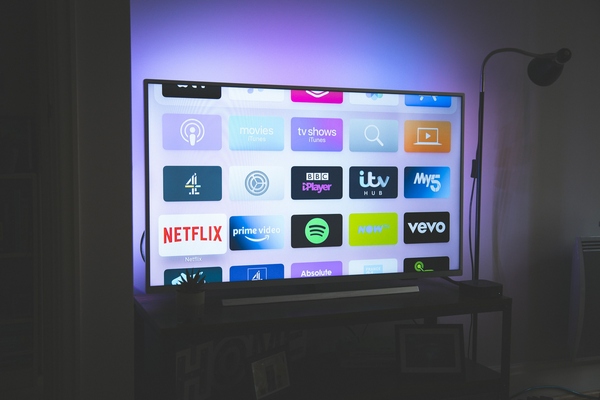Everyone, including people who are yet to have children, knows that parenting isn’t easy. Never has been, probably never will be. It’s stressful and time-consuming, but above all else, it’s an extremely responsible job. And, for the most part, parents do take (or at least try to take) responsibility for the upbringing of their children.
However, with each passing year and decade, life tends to become more and more stressful, despite the many comforts that developments in technology bring us.
To enhance their knowledge and understanding of this topic, parents can consider enrolling in a positive parenting program that offers insights and strategies for managing screen time for young children effectively. These programs provide valuable guidance on fostering healthy digital habits and maintaining a balanced approach to technology within the family dynamic.
And in such a stressful day-to-day, it’s easy to see how many young parents nowadays seem to struggle. Young and small children get easily bored, lack the ability to keep their attention focused on something for more than a couple of minutes, and constantly demand attention. But when you are overwhelmed with other tasks and have several additional responsibilities and things to attend to, it becomes next to impossible to devote your entire attention and energy to a toddler, whose own energy never seems to run out.
Balancing Control and Technology
All these factors combined have led to a common trend in recent years, where parents would simply opt to put a tablet or a smartphone in the little hands of their toddlers. As we all know too well, the little gadgets have this weird property, where they can turn 10 minutes into two hours without us noticing. Apparently, this also works on young children and toddlers, despite their attention being no longer than a couple of minutes.
This shouldn’t actually come as a surprise, considering most of the content we consume nowadays is short-form and perfect for someone with a toddler’s attention span. However, while young and small children can be forgiven for not being able to stay focused for too long, this is something that they are supposed to grow out of. By giving them a source of endless short-form entertainment, you are only reinforcing their lack of attention span, which can have severe negative effects on their cognitive abilities in the long run. And this is only one of the many problems associated with letting your children be raised by a screen, that we’ll talk about in the next lines.
The Negative Impacts that Screens Have on Young and Small Children
We already talked about the problem with the impeded development of a longer attention span caused by letting your toddlers use smartphones and tablets. However, while I think this is one of the biggest problems, it only scratches the surface of the mountain of problems that can come from such a “parenting strategy”.
Here are some of the other more serious issues that people need to consider before putting one of their adult gadgets in the hands of an impressionable child.
Eye Strain
Starting with one of the more obvious problems often associated with excessive exposure to screens, eye strain is definitely something you can expect to occur if your child is spending too much time on their tablet, smartphone, or computer. And since we are talking about young children whose bodies are undergoing rapid development, allowing their eyes to constantly be under the stress caused by a digital screen can lead to all kinds of vision and eye-related problems in the long run.
Sleeping Problems
Toddlers and young children are generally known to often have a hard time falling asleep or staying asleep for too long. This is, in fact, one of the main stresses of parenting, because if the toddler is awake, so must be the parents. And as far as sleep is concerned, overexposure to screens tends to make matters a lot worse. You see, the content that appears on the screen of a phone or a tablet greatly stimulates the hyper-sensitive nervous system of a toddler, which means that there’s even less chance of them falling asleep after having been in front of a screen. This is why it’s a particularly bad idea to let them use something with a screen when it starts getting time for bed, as this is a sure recipe for a long and sleepless night for both of you.

Digital Disconnection
The younger a child is, the more impressionable it is, which means that its mind will be more affected by what the child gets exposed to. This is also why people say that the first seven years play the biggest role in a person’s mental development. However, if a child spends more time being exposed to the digital world than to reality, this can eventually result in the child suffering from the so-called “digital disconnection”. In other words, the child will have difficulty telling apart the real world from the virtual world and will think that everything they see on the screen is something that applies to real life. The results from this can be pretty unpleasant, as the child won’t know how to behave or act and will start becoming more and more confused as it begins to grow up and experience more of the real world.
Behavioral Issues
Excessive use of smartphones, tablets, or computers is also prone to causing behavioral problems in young children. The child becomes more likely to oppose you, especially when you try to separate it from its favorite digital toy. Aggression and irritability are also likely results of overexposure to screens. Since the smartphone/tablet has become your main method of regulating the mood of your toddler or young child, attempting any other strategy is bound to be faced with intense opposition. All of this is without getting into the specific influence that different types of content available on the Internet can have on a child.
Addiction
Lastly, I want to talk about an issue that not many people have when handing over a smartphone to their toddler, so that they could be left alone for an hour or two, and that is the fact that screens are addictive. Many studies over the years have concluded that smartphones can affect the brain in the same way as actual drugs. They can make a person addicted to them to the point where getting separated from the device can have symptoms similar to abstinence. Consider that these are effects often seen in grown adults, who are supposed to have at least some form of impulse control. And if this is what can happen to an adult person as the result of excessive smartphone use, then what’s left for a young child, or worse yet, a toddler?
Final Notes
Obviously, it’s very tempting to get a moment of peace from your screaming toddler, who’s constantly throwing tantrums if you don’t give them every second of your attention (and sometimes, even if you do). However, parenting isn’t supposed to be easy, and as overwhelming as it may be sometimes, it’s still the parents’ responsibility to do their best with the upbringing of their children. Taking the easy way out and letting them be raised by colorful images or other people that appear on a plastic screen is the exact opposite of what a parent should do and, hopefully, this post has helped to remind people of this fact.





 Katie Brenneman is a passionate writer specializing in education, mental health, family lifestyle and online safety. When she isn’t writing, you can find her with her nose buried in a book or hiking with her dog, Charlie. You can follow her on
Katie Brenneman is a passionate writer specializing in education, mental health, family lifestyle and online safety. When she isn’t writing, you can find her with her nose buried in a book or hiking with her dog, Charlie. You can follow her on 





 Explore the Safe Search Engine -
Explore the Safe Search Engine -